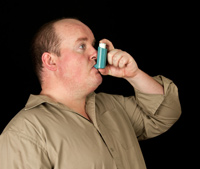Emotional Eating Recovery Guide - Three Things to do Instead of Eating M&Ms
Emotional eating is eating that is a response to our feelings and needs-eating that is not related to a physical need for fuel but to a hunger that we feel when we are feeling something else. It might be eating because we are bored, stressed, worried, angry or feeling helpless. Some of us even get hungry when we're really happy. Emotional eating can be a major problem and a huge barrier to maximizing your success with weight loss. The "M&Ms question" is one of the most common questions I hear. I believe it has been asked in every emotional eating group I have ever led.
"I'm not even hungry and I don't want to eat them--but they call to me. And then I'm eating them. I can't stop. What do I do about the blasted M&Ms?"
Here are three things you can do to avoid the M&M emotional eating trap. The bonus of these alternatives is that they all build skills that can help you take charge of emotional eating in the future.
1. Identify it and label it
Don't allow yourself to be on auto-pilot. Don't allow any part of yourself to deny what you know until "afterwards". If you do, the M&Ms will win and you'll end up feeling guilty and disappointed in yourself. Say it out loud, in a nonjudgmental way. "I'm not physically hungry and I'm dying for those M&Ms. I am experiencing something that is triggering me to think about eating even though I don't need fuel right now."
Don't skip this step. If you are sitting in your cubicle at work and you are embarrassed to say it out loud, pull out a pad of paper and write it down. While you are at it...
2. Explore it
Without judgment, try to be a detective and see if you can identify what this "M&M attack" is really about. Pull out a journal or type on your computer for a few minutes. If you can, you might want to go for a short walk while you think. Why is the candy suddenly so important? What was happening before you were thinking of it? What would you be thinking of if you weren't thinking about the chocolate? What makes this hour different from one when the candy wasn't calling quite so loudly or at all?
If you figure anything out, be direct with yourself and say that out loud too. "I'm not hungry but I'm focusing on eating candy. I just realized it's because I'm really stressed out about this report I need to get done and I'm worried about how people will respond when I turn in the report." If you hit pay dirt here, you'll now find you have a different problem. The problem isn't really about M&Ms, it's figuring out how to take care of yourself and the feelings or issues you identified.
3. Start a List
Take the information you gathered in step two and start a list NOW of everything you can think of that you could do to take care of that feeling in addition to eating M&Ms. Put it in your wallet or by your bed where you can add ideas as you think of them. Don't censor your ideas for being unrealistic or impossible. Write down every possible thing (big or small) you can think of to do in response to worry or anxiety or tiredness or boredom (or whatever you have identified). Make a commitment to try two of those things, this week when the candy craving hits. Carry the list with you. Keep adding and experimenting.
Recovery from emotional eating is a process. It takes time, and it takes the right tools. If you allow yourself to stop, identify that emotional eating is happening, and explore the situation and your needs, you will find your way out of the M&M trap.
-
Top Ten Fat Melting Tips for Effective Weight Loss
If you have ever attempted to lose weigh
-
Are You Losing Weight the Unhealthy Way?
For many, the phrase healthy weight loss
-
Common Types Of Surgery Used In The Treatment Of Arthritis
Although medications are the first defense against arthritis pain
-
Lose Fat Using Garcinia
A very powerful substance which is norma
-
What Is The Best Way To Burn Belly Fat To Be Ready For Summer? Find Out Here!
Summer is quickly approaching, and that
-
Overeating And The Brain
The brain tells us when we are hungry. Specialists think of the stomac
- DON'T MISS
- How To Get Lean, Sexy And Toned Thighs With These 4 Boot Camp Nutritional Tips
- What Is Dieting? How Should Your Diet Plan Compliment Your Weight Loss Plan?
- Weight Loss Foods - Top 4 Picks
- Develop Your Ideal Body With These Weight Loss Strategies
- Straightforward Guidance And Tips For Coping With Hemorrhoids
- Why You Can't Get A Six Pack On A Low Calorie Diet
- Three Often Overlooked Exercises For Losing Weight
- Lose Baby Weight
- The Absolute Worst Excuses for Not Keeping Fit
- Why BMI Is A Terrible Measure Of Your Health




